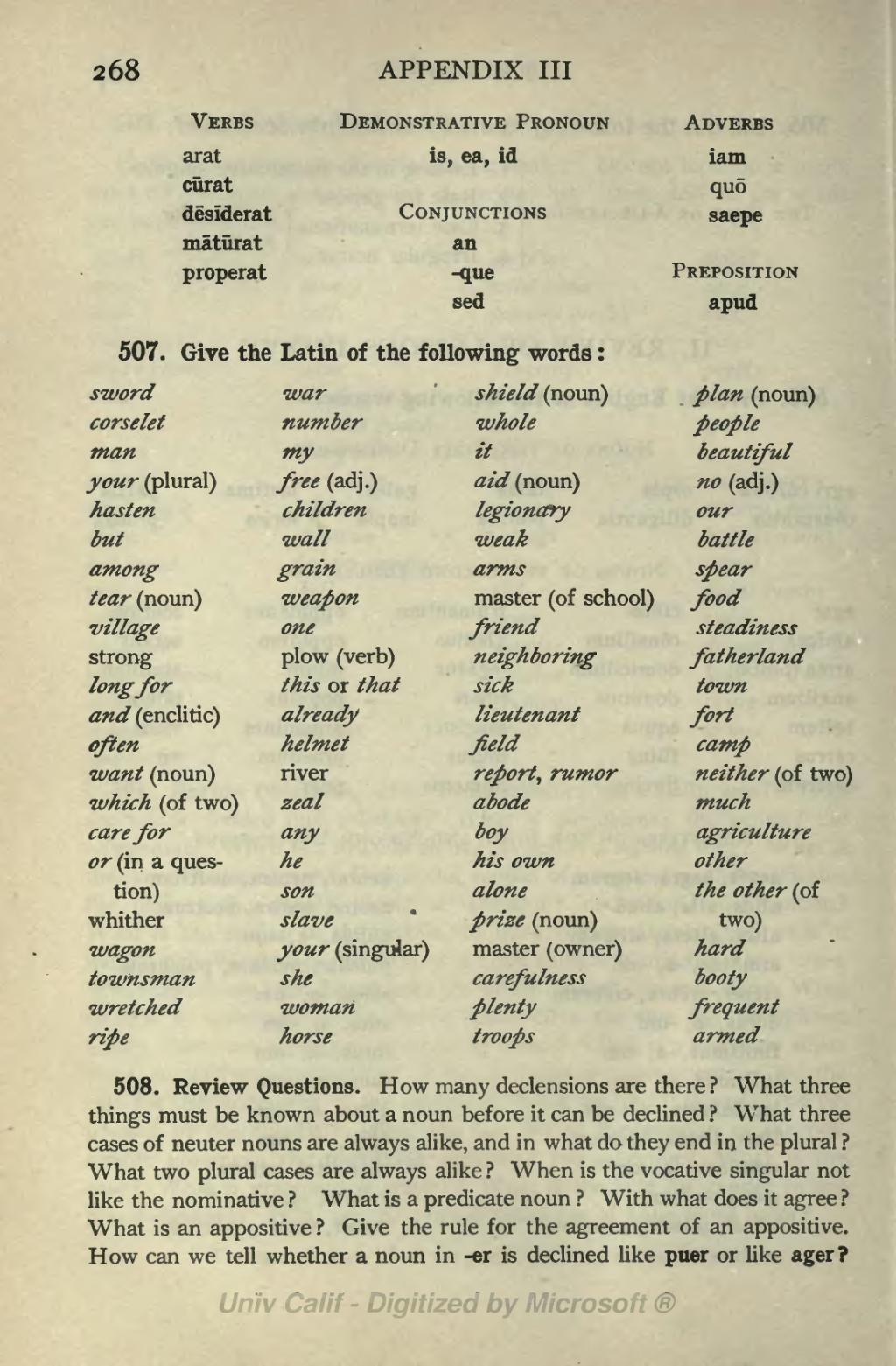268 APPENDIX III
| Verbs | Demonstrative Pronoun |
Adverbs |
|---|---|---|
arat |
is, ea, id Conjunctions
an |
iam Preposition apud |
507. Give the Latin of the following words:
sword
hasten
whither |
war
she |
shield (noun)
friend
carefulness |
plan (noun)
much
hard |
508. Review Questions. How many declensions are there? What three things must be known about a noun before it can be declined? What three cases of neuter nouns are always alike, and in what do they end in the plural? What two plural cases are always alike? When is the vocative singular not like the nominative? What is a predicate noun? With what does it agree? What is an appositive? Give the rule for the agreement of an appositive. How can we tell whether a noun in -er is declined like puer or like ager?
